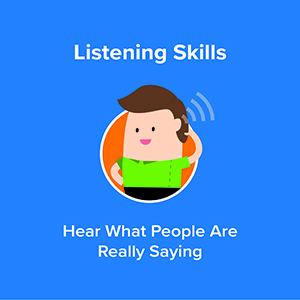Wow, communication has changed so much in my lifetime. It’s unbelievable really. Technology has literally changed the way we communicate by connecting us with the world which is both good and bad. There are any number of apps that allow us to create videos or podcasts, post pictures or articles, text message, or follow people or groups around the globe – who we want to connect with for whatever reason.
I do not believe that text messages are able to convey the same intentions and meanings as face to face or video/phone conversations where we are able to see or hear the other person and can, in real time, ask probing questions if the message is not clear. It is entirely impersonal and wrought with the possibility of misunderstanding. However, today’s generation seems to prefer to text the person sitting next to them over actually speaking to them. Crazy, but true.
Have you ever said one thing and the other person heard something different entirely? The conversation soon spirals out of control. Both parties become frustrated. Conflict ensues. That is ineffective communication.
There is such a thing as effective communication and that involves a lot more than lodging some simple texts, acronyms, emoji’s for reactions, or GIF’s. Let’s dive in and see what effective communication looks like and how you can learn it.
It is a necessity to have effective communication in our business and personal lives if we hope to be successful. Effective communication is a skill that entails way more than simply talking or exchanging information. It involves listening and understanding what is being said on the other side of the conversation. True listening and understanding must consider the other persons’ needs, wants, and desires. Sometimes this is referred to as listening with a servant’s heart or active listening.
Listening to understand, or the art of active listening, is a skill that must be developed over time like any other skill. Practice can make near perfect. Listening to the emotions and intentions of the other person to understand what they are saying is a critical component to effective communication, but the other person needs to feel heard and understood too. In order to become a good listener you must practice active listening.
Active listening means being present and focused and free from distractions. Let the other person know that you listening. How do you this? You can acknowledge them. It’s as simple as saying something back to them. Gotcha or uh huh will suffice. Each is merely affirmation and not agreeing or disagreeing with the message, but it lets the person on the other side know that you are at least interested in what they are saying. You can follow that up with an occasional question or comment to ensure the message is clear.
There are many barriers to effective communication. Emotions tops that list.
Stress or overwhelming emotions can easily lead to messages being misinterpreted or misunderstood. They can send off-putting, confusing signals that lead to knee-jerk reactions. Take time to calm down before embarking on a conversation if you’re emotionally raw or stressed out.
Don’t try to multi-task while engaged in a conversation if you want to have understanding and clarity. Focus on the speaker and what they are saying.
Contradictive body language is a cue that you are not listening and therefore will not hear the message as it is intended. Make sure that your body language is in concert with your facial gestures. Don’t shake your head no when you mean yes. Don’t look away. Look at the speaker as they talk.
There are several techniques for active listening that you can rehearse.
- Pay attention.
- Show via body language or facial gestures that you are listening.
- Provide feedback.
- Don’t immediately judge.
- Use an appropriate responses for what they are telling you.
Sounds easy enough right? Well, it is not as easy as it seems.
Paying attention means that you are giving the speaker your undivided attention. If you are face to face or on a video chat look directly at the person with whom you are speaking. Dispel with any distractions or distracting thoughts and side conversations. Do not spend time mentally preparing your rebuttal as they speak. Listen to the speaker’s body language and facial gestures.
Your body language and facial gestures show that you are engaged. An occasional nod can also show that you are listening. An open body position portrays that you listening too.
As a listener you should attempt to understand what is being said despite your personal filters, judgments, and assumptions. You might try reflecting on and asking questions about what is being said to ensure that you have a clear understanding of the message. You can paraphrase their words periodically.
Don’t interrupt the speaker. Interruptions can limit your understanding of the message. Allow the speaker to finish their points and then lob your questions. Do not counter with arguments or the conversation will take a negative turn.
Do not attack the speaker or put them down for them saying what they are saying. Be respectful, candid, and open with your responses and opinions. Treat the other person the way you wish to be treated.
I hope this short missive has helped you learn about becoming a more effective communicator and has given you some food for thought where conversations and misunderstandings are concerned. Go forth and communicate effectively. Your life will be so much smoother for doing so.

